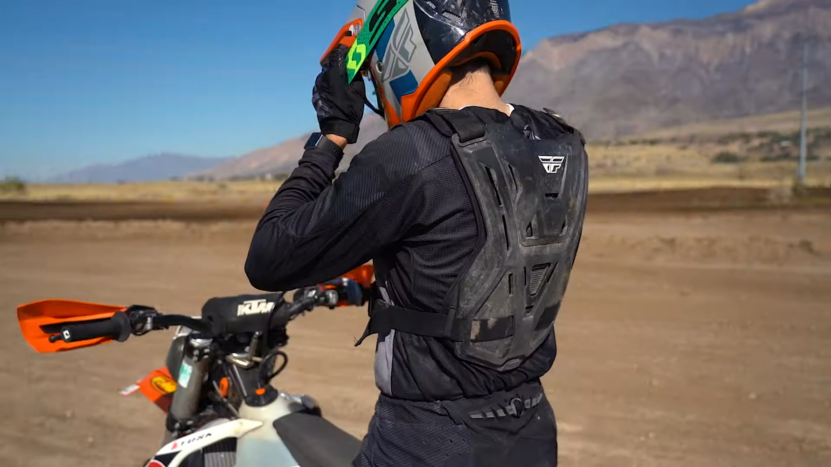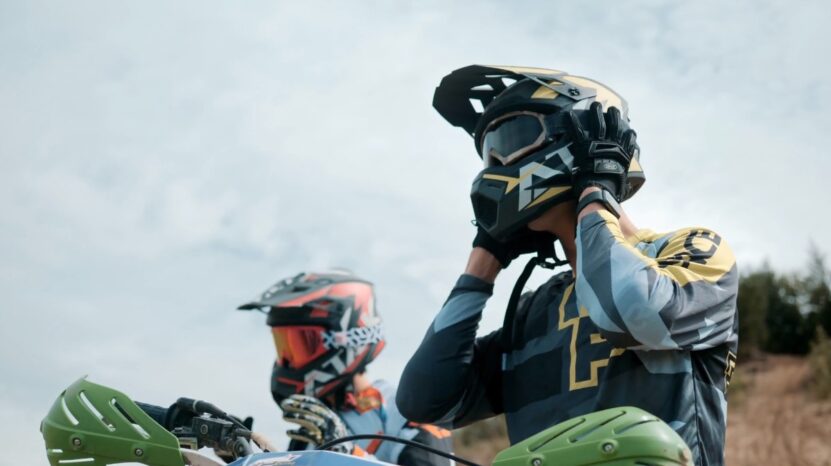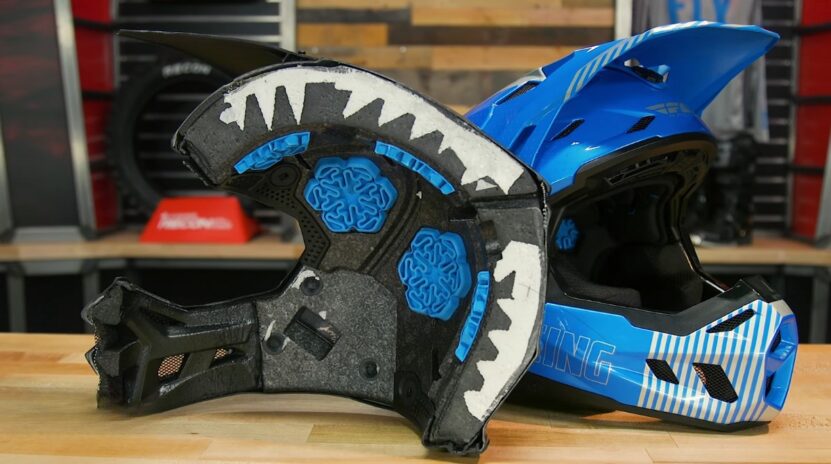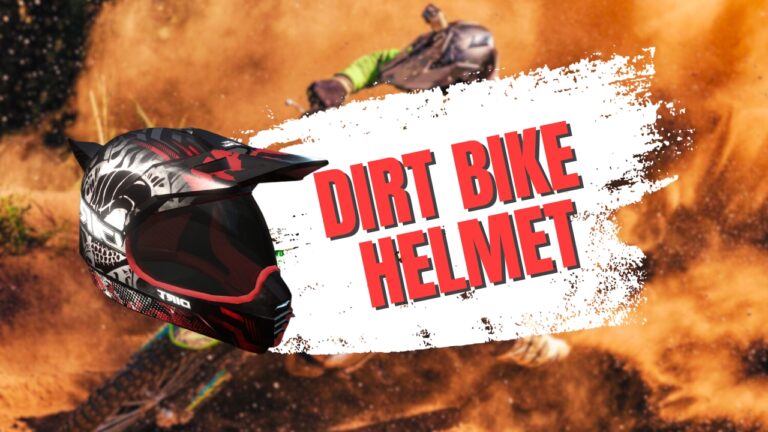Assuming you already have the proper attire, a good dirt bike helmet is the most important safety gear you can buy. Your brain is your most important asset when riding and crashing a dirt bike.
A quality dirt bike helmet will protect your noggin in the event of a crash, keeping you safe and preventing serious injury. Dirt bike helmets come in a variety of sizes. To find the right size helmet for you, it is important to measure your head.
What Size Dirt Bike Helmet Do I Need?

When choosing a dirt bike helmet, one of the most important considerations is size. A properly sized helmet will provide optimal protection in the event of an accident, and will also be more comfortable to wear for extended periods of time.
You can also use a sizing chart to determine your helmet size. Sizing charts are available from most helmet manufacturers and can be found online. Simply find a chart that includes your head circumference measurement, and then find the corresponding helmet size.
- XS: Up to 20.5″
- S: 20.5″ – 21.25″
- M: 21.25″ – 22″
- L: 22″ – 22.75″
- XL: 22.75″ – 23.5″
- XXL: 23.5″ and up
Once you have your helmet size, it’s important to try on the helmet to ensure a proper fit. The helmet should sit snugly on your head, with the front of the helmet resting just above your eyebrows. The straps should also be adjusted so that they’re not too tight or too loose.
When trying on a dirt bike helmet, it’s also important to wear the same type of protective gear that you’ll be wearing when riding. This includes goggles or glasses, as well as any other type of neck or face protection. By doing this, you can get a better sense of how the helmet will feel and fit when you’re actually out on the trails.
Once you’ve found the perfect fit, don’t forget to adjust the helmet’s visor. The visor should be in the down position when you’re riding, to help protect your eyes from debris kicked up by the tires. You can also adjust the visor to allow more or less airflow, depending on the conditions.
How To Do Helmet Size Measurement
To measure for a correctly fitting helmet, you will need a flexible measuring tape. You will also need to have someone help you take the measurement.
- Start by measuring the circumference of your head just above your eyebrows. Be sure to keep the tape level and not too tight. Record this measurement in inches or centimeters.
- Next, measure the circumference of your head at the widest point. This is usually just above the ears. Again, be sure to keep the tape level and not too tight. Record this measurement in inches or centimeters.
- Finally, measure the length of your head. Start at the center of your forehead and measure down to the base of your neck. Record this measurement in inches or centimeters.
How Tight Should A Dirt Bike Helmet Fit?
Assuming you’re talking about motocross or off-road helmet, there are a few things to keep in mind when determining how tight your helmet should fit.
- First: You want the helmet to be snug but not too tight. It should fit snugly around your head without putting too much pressure on any one area.
- Secondly: You want to make sure that the helmet is level. It should sit level on your head, with the visor parallel to the ground.
- Third: You want to ensure that the straps are tight enough that the helmet doesn’t move around on your head, but not so tight that they’re uncomfortable.
Generally speaking, a good rule of thumb is to have the helmet tight enough that you can only get one or two fingers between the strap and your chin.
What Hat Size Is A 23-Inch Head?

If you’re wondering what hat size is a 23-inch head, the answer is 7 3/8. This is based on the standard hat sizing system, which uses measurements in inches to determine hat sizes.
How Big Is A Medium-Size Helmet?
A medium-size helmet should measure approximately 22 inches in circumference. This should give you enough room to comfortably wear the helmet, without it being too loose or too tight. So if you’re not sure what size helmet to buy, err on the side of caution and go for a medium.
What Size Helmet Is 58cm?
Helmet sizes can vary slightly between manufacturers. However, a good rule of thumb is that a 58cm helmet is likely to fit someone with a head circumference of approximately 23 inches (58.42 cm).
If you’re unsure of your exact head measurement, you can always err on the side of buying a slightly larger helmet – it’s always better to have a little extra room than to be uncomfortable.
Do Dirt Bike Helmets Break-In?

One of the most common questions we get asked here at BTO Sports is whether or not dirt bike helmets break in. The simple answer is yes, but there are a few things you should know before you go out and buy a brand new helmet.
The first thing to keep in mind is that all helmets will have a slight “break-in” period. This is because the materials used to make the helmet, such as the EPS foam and the outer shell, will compress slightly over time.
This break-in period is usually pretty short, and most riders will notice a difference after just a few rides. However, there are a few things you can do to help speed up the break-in process. One of the best things you can do is to take your helmet out for a few practice rides before you actually hit the trails or track.
This will help the helmet conform to your head shape, and it will also allow the materials to start breaking in. Another thing you can do is to wear your helmet around the house for a little while. This might seem silly, but it will actually help the helmet to break in faster. Just make sure you don’t wear it for too long, as you don’t want to overdo it and end up with a head that’s too small for the helmet.
So, there you have it. Yes, dirt bike helmets do break in, but there are a few things you can do to help speed up the process. Just remember to take it easy at first, and you’ll be shredding in no time!
Conclusion
Depending on the brand, your head shape, and your riding style, you will need a different-sized helmet. Make sure to try on a variety of helmets before purchasing one to get the best fit. Also, keep in mind that as you ride more often, you may want to upgrade to a better quality helmet for added safety.

